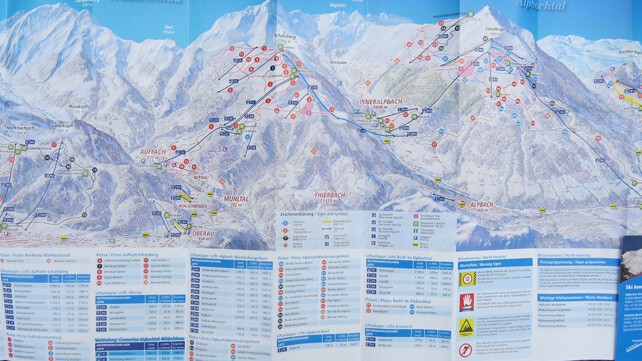
Pictured above is the Ski Juwel piste map. It shows the full extent of the ski area created in 2012 by the union of the the lift systems in the Wildschonau and Alpbach. Altogether, 109km of piste are on offer: making it the one of the ten largest ski areas in the Tirol.
The map does a grand job of showing Skijuwel’s layout. But it’s only a map, and it can’t tell you the real reasons why this mid-sized network of lifts and runs is deserves your consideration, especially if you’re a beginner, or any kind intermediate. So here, to make it clear, are the secrets it won’t reveal at first glance.
1. This is a ski area blessed with lots of fall-line pistes
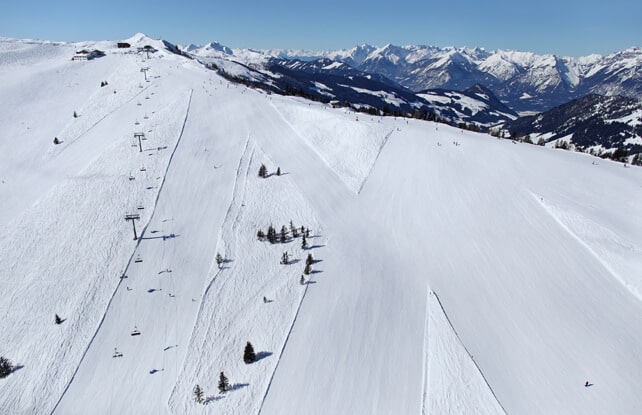
The “fall line” is the route a stone would take if you rolled it down a smooth slope. In other words, it’s the most direct route downhill: and the best pistes are usually the ones that follow it.
Why? Because they’re direct, unfussy and good for your technique. Not only is it an inspiring sight when you’re standing at the top, looking straight down. A fall-line piste also gives you the chance to settle into your skiing, and build a rhythm: without constantly having to change your course or worry about what’s coming round the next bend. You can make turn after glorious, swooping turn until your legs explode – or someone suggests you stop to admire the view.
Ski Juwel has lots of pistes like this. There are three crackers on the slopes above Niederau; two glorious top-to-bottom descents in Alpbach; and another sweet and direct little run off the back of Auffach, towards Inneralpbach. Four of these pistes are red, and are steep (on one of them I saw a skier sit down to make her turns, rather than risk doing it standing up). Two are black. All five are going to challenge you to be a better skier, and as you learn how to deal with them your self-confidence is going to soar.
Which is the best? In my book, it’s either the former FIS-rated downhill course (marked 15 and 16 on the Ski Juwel piste map) which drops through 800m from the Lanerkopfl to Niederau. Or red 47a and 47, which drop through 900 vertical metres from the Gmahkopf to Inneralpbach in the Alpbach valley. But really it’s best to ski them all repeatedly yourself and make your own mind up…
2. But not all the pistes are hell-for-leather
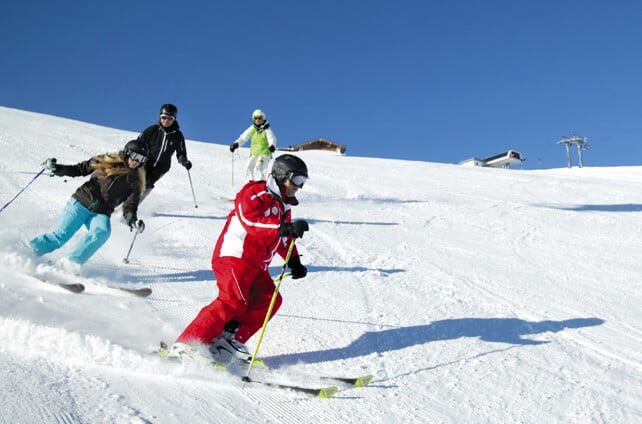
Not everyone wants to go haring straight down a top-to-bottom run on first day of his or her holiday. Most skiers need to warm up their ski legs first and rediscover their technique. That’s where the slopes on the north face of the Schatzberg, above Auffach, come in handy.
Here, at the top of the lifts, there’s a broad, gentle, and generally snowy face which is home to several wide pistes. It’s above the treeline, so it’s best avoided if it’s cloudy or snowing. But catch it on a sunny day, and you’ll be able to make lots of easy, no-stress turns: perfect for getting your groove back at the start of the trip.
3. There’s a good mix open slopes and trees
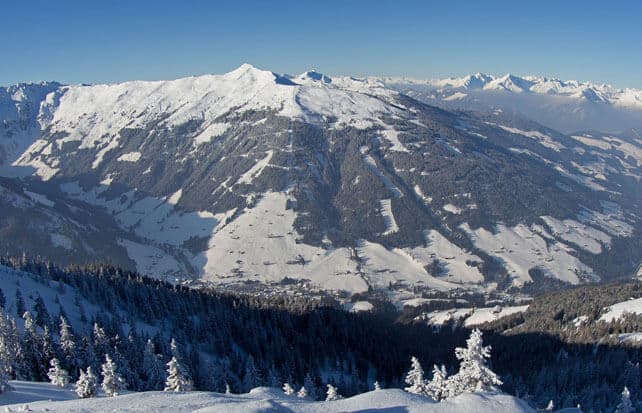
The top of both the Auffach and Alpbach sectors of Ski Juwel can be hard going on a cloudy day – just like any terrain that’s above the treeline. But actually that’s a minor discomfort, because the vast majority of pistes in the ski area are cut through forest. Trees add definition to the snow when the light’s flat – by casting dark “lowlights” on its surface – and tree-lined pistes really come into their own on cloudy days. Which means Ski Juwel can cope a lot better with changing weather than a high-altitude resort such Tignes.
There is a drawback though. The trees are there because almost all the skiing is below 2000m. That’s fine in a cold, snowy winter like the one of 2012-13. But rather less brilliant if it’s warm and dry, as it was at the start of the 2013-14 season. By way of compensation, most of the important slopes are north facing, which helps to keep the snow cold, and standards of snow-making and piste-grooming are high – so even if the snow off-piste is wafer-thin, you can still ski most of the pistes. But all the same, this is a place for a mid-winter and last-minute trips, when you’ve got the best chance of finding good snow.
4. Laid-back Niederau is great for beginners
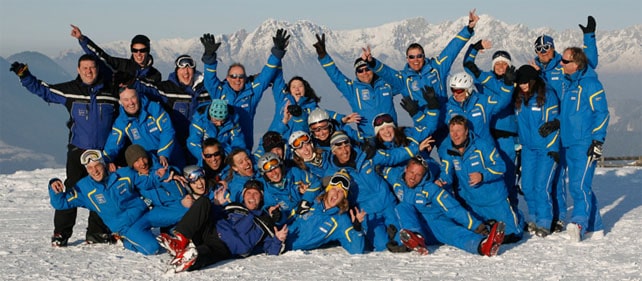
5. There’s plenty of off-piste skiing in the Alpbach valley
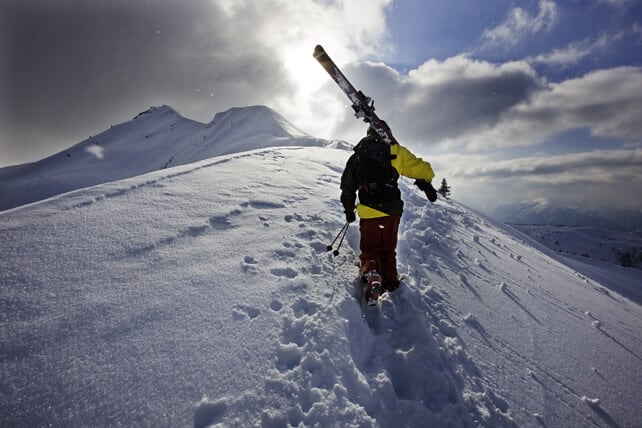
Want to test yourself against more exacting terrain? Then the southern end of the Alpbach valley, beyond the Wiedersberghorn is the place – skiing from the Hornbahn 2000 chairlift. Check the Tirol’s excellent avalanche bulletin first, make sure you’re properly-equipped, and hire a guide to keep you out of the avalanche zones. He/she will also make sure you don’t get lost in the thick forest that coats the lower slopes of the valley.
6. Food and drink is cheap
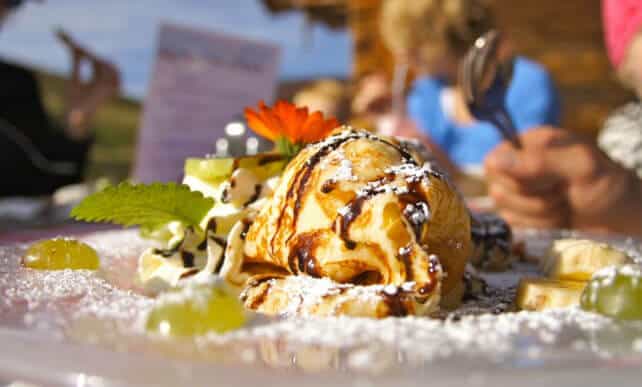
7. And holidays won’t cost a fortune either

I’m not saying every holiday to this part of the Austrian Alps needs to be cheap and cheerful. For example, the four-star superior Hotel Böglerhof in Alpbach is a calm and lovely upmarket hotel if you fancy a taste of luxury. But even a 40sq metre junior suite here is cheaper than a regular double room in some three-star hotels in Meribel in France.
For more information about holidays in the Skijuwel, visit the websites of the Alpbachtal Tourist Office and the Wildschönau Tourist Office. There’s more information at Tyrol.com too.


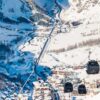
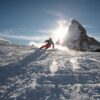






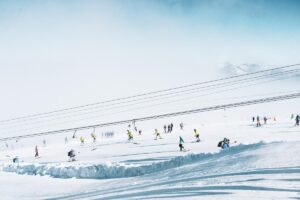


The Secrets of the Ski Juwel Piste Map | Welove2ski #Tirol https://t.co/DeVfDQHmZw via @welove2ski
Having been out here since 14th Dec (nearly six weeks ago), I can endorse this article completely. The snow coverage has been unusually poor-dreadful but somehow it’s not as big a disaster as it might be elsewhere. You find the slopes that work in the mornings and early afternoons and work out a pattern which you vary, depending upon daily variables. Auffach, for example, is an improvers’ resort in that intermediates can make the step up to advanced and even beyond and there’s been enough snow, every day (just) for that. It’s started snowing this week, again, after a long break and more is promised but, in the meantime, you can enjoy the strong local hospitality. There has been singing and yodelling in the Gipfo-Hit on more than one lunchtime in the last few weeks. In one gondola coming up from Alpbach to the Gipfo-Hit last week, the door opened in front of me to reveal a traditionally-attired squeeze-box and fiddle band playing at full chat. Down in Auffach, at the base of the piste, the Grutt’n Stadl bar offers a stylish, excellent and entirely authentic take on exuberant Austrian Apres-Ski in an oval-variant on the classic circle-bars of the valley. Run by two local families, it connects the visiting skier with the surrounding community while staggering amounts of local beer and schnapps are consumed, all in a warm and welcoming space. Unlike in French resorts, for example, the locals will gladly initiate conversations with you in often very good English with an offer to buy you a shot from one of the local brews. It soon seduces and is hard to leave. Highly recommended.